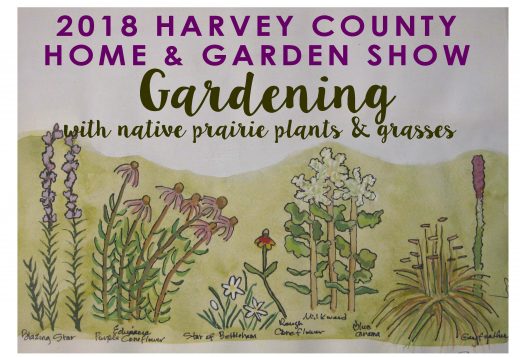“Where Buffalo Roam” is part of the history of the Kansas prairie. It is also the title of one of the speaker topics at the Harvey County Home and Garden Show this Sunday at 1:00 pm. Buffalo grass is my favorite lawn grass. If you would like to learn how to have a buffalo grass lawn this would be a great program to attend. Admission is free for kids 12 and under, while attendees 13 and over is just a dollar.
I am a believer in organic matter! If you only do one thing to improve your lawn or garden areas you should work in organic matter. Organic matter is a good way to improve garden soil as it improves a heavy soil by bettering tilth, aeration and how quickly the soil absorbs water.
However, organic matter added in the spring should be well decomposed and finely shredded/ground. Manures and compost should have a good earthy smell without a hint of ammonia. Add a 2-inch layer of organic matter to the surface of the soil and work the materials into the soil thoroughly. Be sure soils are dry enough to work before tilling as wet soils will produce clods.
To determine if a soil is too wet to work, grab a handful and squeeze. If water comes out, it is much too wet. Even if no water drips out, it still may not be dry enough to work. Push a finger into the soil you squeezed. If it crumbles, it is dry enough, but if your finger just leaves an indentation, more time is needed. Be sure to take your handfuls of soil from the depth you plan to work the soil because deeper soils may contain more moisture than the surface.

